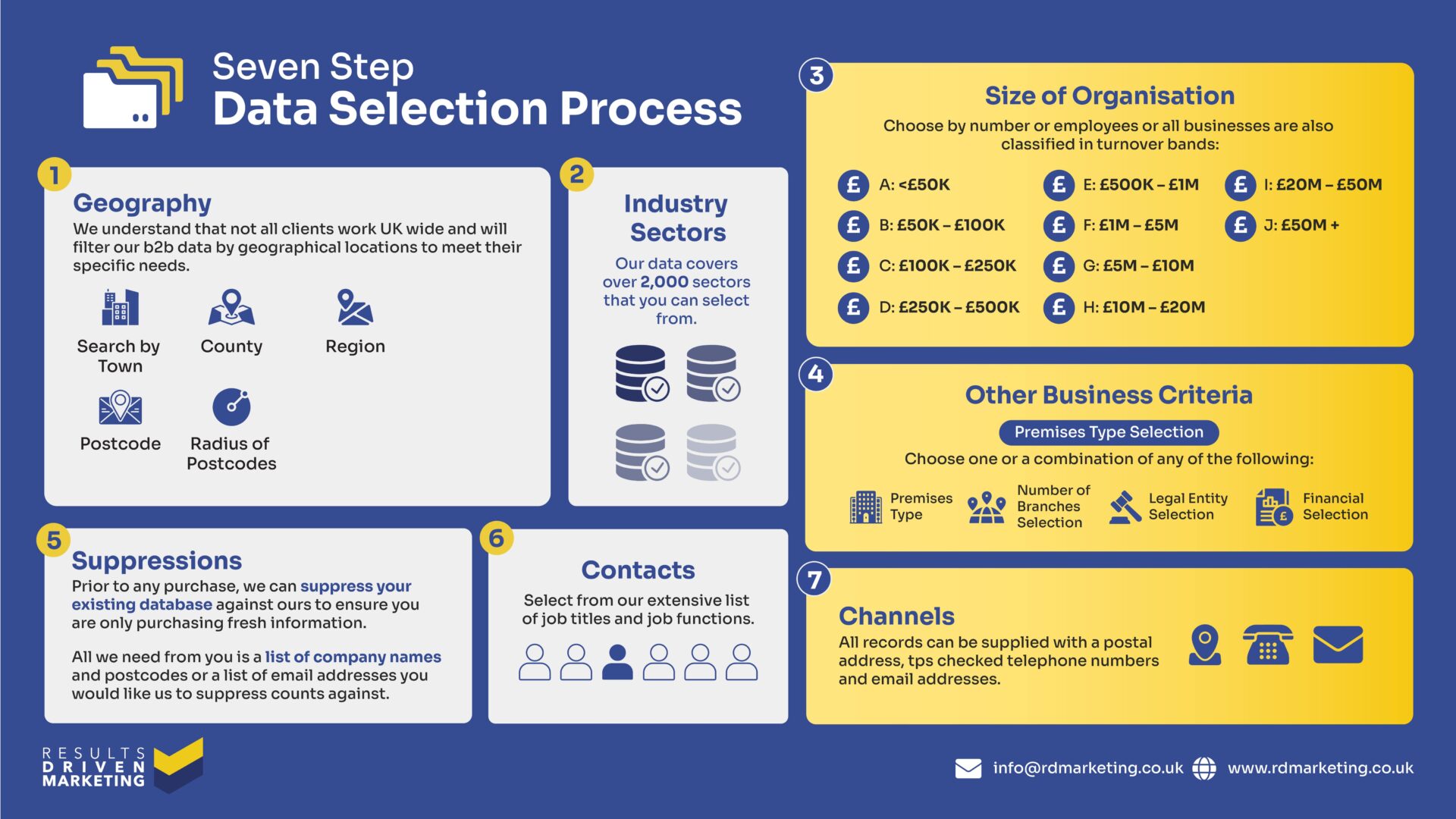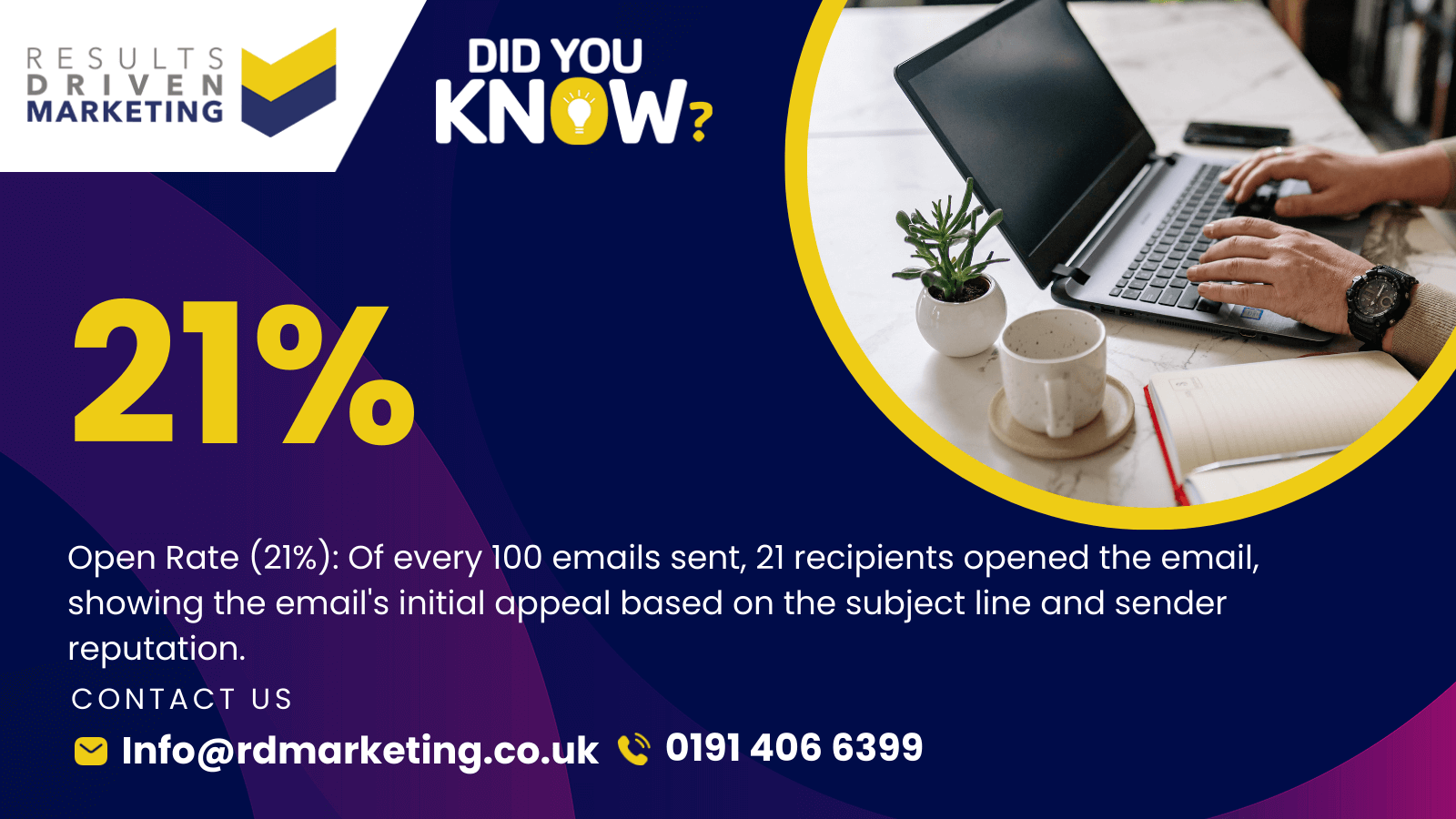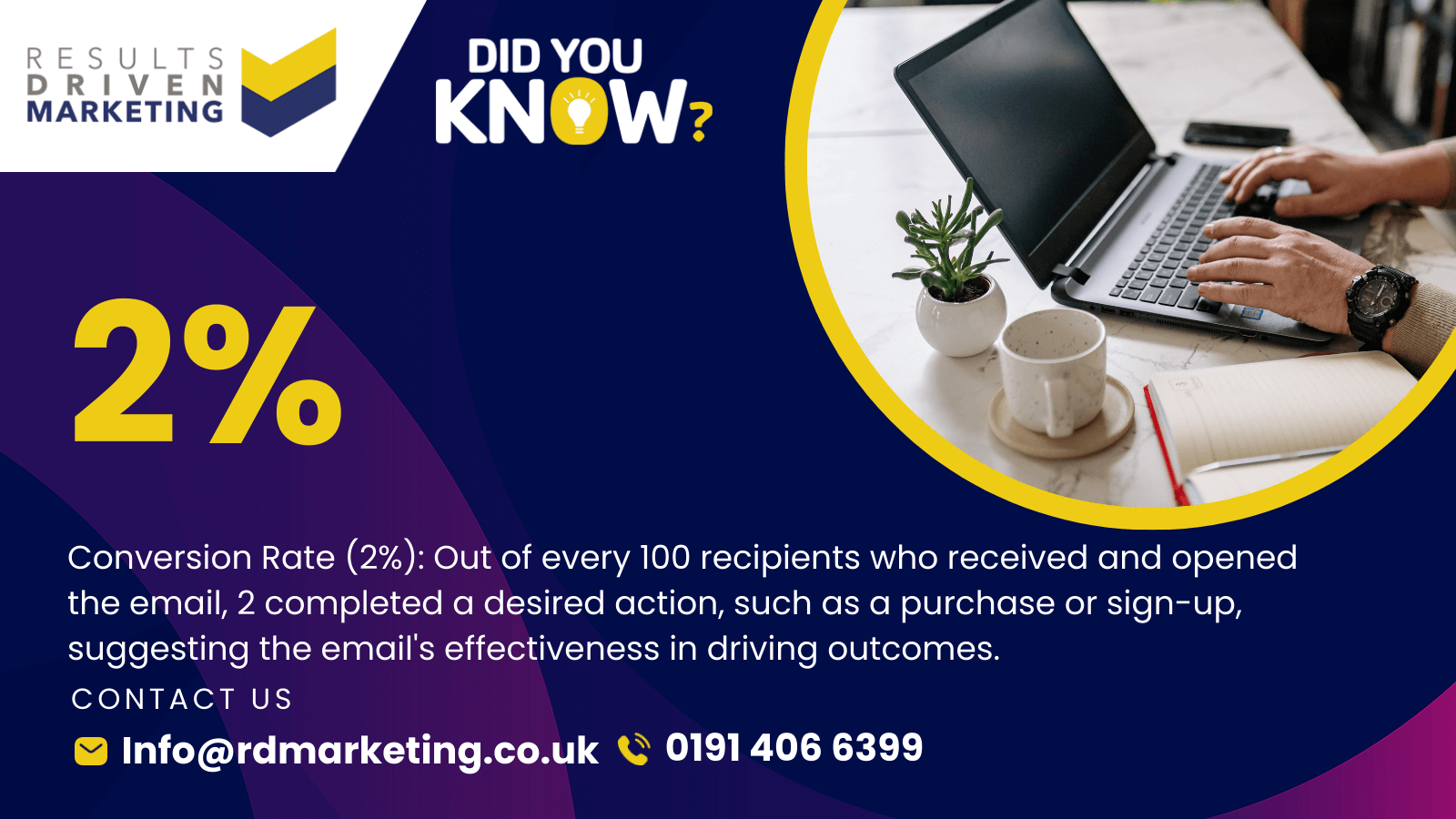
The Top 10 Email Marketing Metrics Every Marketer Should Track
When it comes to running successful email campaigns, tracking the right email marketing metrics is absolutely essential. Simply sending emails isn’t enough. To truly connect with your audience and maximise results, you need to monitor key metrics that reveal how well your strategies are performing.
Why does this matter? Email marketing metrics are more than just numbers; they’re a direct reflection of your campaign’s effectiveness. By understanding what works—and what doesn’t—you can optimise your strategies to improve engagement, increase conversions, and ultimately drive more revenue. Whether you’re trying to boost open rates, refine click-throughs, or reduce bounce rates, tracking these metrics is the foundation for success.
This article dives into the top 10 email marketing metrics every marketer should track. You’ll discover what these metrics are, how to measure them, and actionable tips to enhance your email campaigns. From click-through rates to conversion rates, we’ll cover it all.
Looking to take your email campaigns to the next level? At RD Marketing, we offer tailored Email Marketing Management Services and Data Cleansing Services to ensure your data is accurate and actionable. With our expertise, you can refine your strategy and see real results. Let’s dive in!
Table of contents:
The Top 10 Email Marketing Metrics Every Marketer Should Track
To get the most out of your email marketing campaigns, you need to track a set of core email marketing metrics. Here are the top 10 metrics every marketer should pay attention to, along with tips on how to monitor and improve each one.
Metric 1: Open Rate
Definition & Importance
Open rate measures the percentage of recipients who open your email. It’s a fundamental metric for understanding how well your subject lines and sender name are resonating with your audience.
Factors Affecting Open Rate
Several elements influence open rate, including:
- Subject Line: An engaging subject line grabs attention and entices the recipient to open the email.
- Timing: Sending emails at optimal times increases the likelihood of opens.
- Sender Name: Using a recognisable and trusted sender name helps build credibility and trust with the audience.
Tips for Improving Open Rate
Optimise Your Subject Lines: Try A/B testing various subject lines to see what works best for your audience.
Personalise When Possible: Including the recipient’s name can make an email feel more personal and improve open rates.
Send at the Right Time: Experiment with sending at different times to find when your audience is most likely to engage.
Using clean, verified data, like our Direct Mail Data, helps ensure that you’re reaching real, active contacts for more accurate open rate insights.
Metric 2: Click-Through Rate (CTR)
Definition & Importance
Click-through rate (CTR) indicates the percentage of recipients who clicked on at least one link within your email. It’s a critical metric for measuring engagement, as it shows how many people interacted with the content beyond simply opening the email.
Tips for Optimising CTR
Place Clear Calls-to-Action (CTAs): Ensure that your CTAs stand out and are easy to find.
Use Engaging Visuals: Images and buttons can make CTAs more appealing and likely to be clicked.
Segment Your Audience: By tailoring content to specific audience segments, you’re more likely to increase engagement. For instance, our Email Marketing Management Services can help manage segmentation and optimise targeting for better CTR.
Metric 3: Conversion Rate
Definition & Importance
Conversion rate measures the percentage of recipients who completed a desired action after clicking on your email (e.g., filling out a form or making a purchase). This metric is essential for assessing the direct impact of your emails on business objectives.
Tips for Enhancing Conversions
Optimise Landing Pages: Ensure that the landing page aligns with the email content and provides a seamless user experience.
Personalise Content: Personalised offers or product recommendations can significantly increase conversions.
Use Strong CTAs: Clearly communicate the action you want the reader to take.
For B2B marketers, high-quality data, such as B2B Data, ensures that your messages are reaching decision-makers, which can lead to higher conversion rates.
Metric 4: Bounce Rate
Definition & Importance
Bounce rate refers to the percentage of emails that couldn’t be delivered. Bounces are categorised into two types:
- Hard Bounce: Indicates a permanent issue, such as an invalid email address.
- Soft Bounce: Indicates a temporary issue, like a full inbox.
High bounce rates can damage your sender reputation, making it essential to maintain a clean, accurate email list.
Tips for Reducing Bounce Rate
Regular List Cleaning: Use services like our Data Cleansing Services to regularly remove invalid or inactive contacts.
Verify Emails: Tools like our CTPS Checker ensure that your list remains updated and free of contacts that could negatively impact your bounce rate.
Metric 5: Unsubscribe Rate
Importance of Tracking Unsubscribe Rate
Unsubscribe rate measures the percentage of recipients who opt out of receiving your emails. While it’s normal to have some unsubscribes, a high unsubscribe rate may indicate that your content isn’t resonating or that you’re sending too frequently.
Best Practices for Reducing Unsubscribe Rate
Manage Email Frequency: Ensure that you’re not overwhelming subscribers with too many emails.
Offer Relevant, Value-Driven Content: By focusing on delivering value, you can keep subscribers engaged and interested.
Provide an Easy Unsubscribe Option: A straightforward unsubscribe process can help avoid spam complaints and improve your brand’s reputation.
Metric 6: Spam Complaint Rate
Definition & Importance
Spam complaints occur when recipients mark your email as spam. This rate is important because high spam complaints can harm your deliverability and reputation.
Consequences of High Spam Rates
If too many recipients mark your emails as spam, email providers may restrict your deliverability, impacting future campaigns.
Tips to Avoid Spam Complaints
Use Permission-Based Marketing: Always obtain consent before adding someone to your list.
Comply with Regulations: Following GDPR and other relevant guidelines protects your brand and helps reduce spam complaints.
Metric 7: List Growth Rate
Overview of List Growth Rate
List growth rate tracks how quickly your subscriber base grows over time. A healthy growth rate indicates that your email marketing efforts are bringing in new leads.
Strategies for Healthy List Growth
Offer Incentives for Signing Up: E-books, discount codes, and exclusive content can encourage more people to subscribe.
Engage Existing Subscribers: Retention is just as important as acquisition. Keep your list engaged to reduce churn.
Using targeted lists, like our International Email List, can also help grow your audience and reach markets beyond local boundaries.
Metric 8: Forwarding/Share Rate
Explanation of Forwarding Rate
This metric reflects the percentage of subscribers who forward or share your emails with others, indicating the shareability and value of your content.
Tips for Encouraging Email Sharing
Create Share-Worthy Content: Make sure your content is valuable enough to be shared.
Add Social Sharing Buttons: Including these buttons in your emails makes sharing more convenient.
Metric 9: ROI (Return on Investment)
Definition & Importance
ROI calculates the revenue generated from your email campaigns relative to the cost. This metric is crucial as it directly measures the profitability of your efforts.
Techniques to Maximise ROI
Automate Workflows: Set up automated campaigns to increase efficiency.
Segment Your Audience: Use tailored messaging to reach different segments effectively.
Focus on High-Quality Data: Data services like our Consumer Data can help you reach a highly relevant audience, driving higher returns.
Metric 10: Revenue Per Email (RPE)
Significance of Measuring RPE
Revenue per email measures the average revenue generated for each email sent, providing insight into the financial impact of each message.
Strategies for Increasing RPE
Upsell and Cross-Sell Opportunities: Promote relevant products or services within emails.
Incentivise Loyalty: Use special offers or rewards to increase purchase frequency.
When combined with services like our Data Enrichment Services, RPE can be improved by providing more personalised and targeted offers, increasing the likelihood of repeat purchases.
By focusing on these 10 essential email marketing metrics, you’ll be equipped to analyse, optimise, and improve every campaign you send out. For more support in driving your email marketing success, explore RD Marketing’s full range of data and marketing services designed to support targeted, results-driven campaigns.
How to Track & Measure Email Marketing Metrics Effectively
To make the most of your email marketing metrics, you’ll need to use reliable tools that allow for comprehensive tracking and analysis.
With the right email marketing software, you can monitor each metric, make sense of the data, and implement meaningful changes. Here’s an overview of some popular tools and platforms for tracking these key email marketing metrics, along with the benefits of regular, data-driven adjustments to keep your campaigns optimised.
Essential Tools for Tracking Email Marketing Metrics
To truly understand what’s happening with your email campaigns, tracking needs to go beyond basic open and click-through rates. Fortunately, several platforms make this easy, and many offer in-depth insights that can enhance your strategies.
- Google Analytics: Google Analytics is a powerful tool for tracking conversions and website traffic generated from your emails. By integrating UTM parameters with your links, you can track exactly how recipients interact with your website after clicking through from an email. This is ideal for measuring engagement metrics like conversion rate and revenue per email.
- Email Marketing Software (e.g., Mailchimp, HubSpot): Platforms like Mailchimp and HubSpot are designed to give a full picture of email performance, with built-in reports on open rate, click-through rate, bounce rate, and more. They also allow for segmentation, automation, and A/B testing, all of which are crucial for optimising campaigns. By pairing one of these tools with our Email Marketing Management Services, you can further refine your campaigns through personalised audience targeting and automation.
- Dedicated Email Platforms with Data Segmentation Capabilities: Tools like Klaviyo and ActiveCampaign offer robust segmentation options and can integrate with e-commerce platforms, making it easy to track sales-driven metrics, such as revenue per email and ROI. When combined with high-quality, targeted lists from our Consumer Data or B2B Data, these platforms can maximise your reach and return on investment.
- List Maintenance Tools: To ensure that your bounce rate and spam complaints remain low, consider using tools that focus on list quality, such as our Data Cleansing Services and CTPS Checker. By maintaining an accurate and up-to-date contact list, you’re more likely to reach engaged subscribers and see positive email marketing metrics across the board.
The Importance of Regular Tracking and Data-Based Adjustments
Monitoring your email marketing metrics on a regular basis is vital to ongoing campaign success. When you make data-driven adjustments, you’re not only optimising individual metrics but also boosting your overall email performance. Here are a few reasons why regular tracking matters:
- Identify Trends Over Time: Regular tracking allows you to spot trends, such as peak engagement days or seasonal variations in click-through and open rates. With these insights, you can adjust sending schedules, content themes, and even subject lines to improve engagement during high-interest periods.
- Pinpoint and Address Issues Early: Consistent tracking helps you quickly identify when a particular metric falls below expectations. For example, a sudden spike in unsubscribe or spam complaint rates might indicate that a specific campaign isn’t resonating with your audience. By catching this early, you can refine your approach or adjust the messaging in your next email.
- Make Strategic Adjustments Based on Real-Time Data: Regular monitoring ensures you’re always working with the latest data. By adjusting campaign elements like CTA placement or content format based on performance data, you’ll see incremental improvements across your email marketing metrics. This approach also allows for continuous A/B testing, which can improve metrics like click-through rate and conversion rate over time.
Tracking email marketing metrics requires both the right tools and a commitment to regular adjustments based on performance data. By leveraging services like our Email Address List Data and Data Enrichment Services, you can further enhance your audience insights and, ultimately, your campaign outcomes.
For a more hands-on approach, explore RD Marketing’s full suite of data and email management solutions, which are designed to help you monitor and optimise these essential metrics for better, data-driven results.
Conclusion
In the world of digital marketing, tracking and optimising email marketing metrics isn’t just an added bonus—it’s essential to the success of your campaigns.
By keeping a close eye on metrics like open rate, click-through rate, conversion rate, and more, you gain a data-driven perspective on what truly resonates with your audience. These insights allow you to refine your strategies, deliver more relevant content, and, ultimately, drive better results for your brand.
Every email campaign presents an opportunity to learn, adjust, and improve. Whether you’re boosting engagement through strategic timing, cleaning your lists for accuracy, or experimenting with personalised CTAs, each metric provides a valuable piece of the puzzle.
Regularly reviewing your email marketing metrics empowers you to make small but impactful changes that increase ROI, nurture audience relationships, and enhance brand loyalty.
If you haven’t already, consider taking a fresh look at your current metrics to identify areas for improvement. Start with the basics—like ensuring your list is clean and accurate with our Data Cleansing Services or enhancing personalisation with our Data Enrichment Services.
Need targeted data to reach the right audience? Explore our range of data solutions, including B2B Data, Consumer Data, and Email Address List Data.
For more ways to refine your email marketing, visit RD Marketing and discover our full suite of services, from Telemarketing Data to Email Marketing Management Services. Start optimising your email marketing metrics today and see firsthand the positive impact it can have on your campaigns and your business.
Who are we?
Thinking about “how do I buy data“?
Providing b2b database solutions is our passion.
Offering a consultancy service prior to purchase, our advisors always aim to supply a database that meets your specific marketing needs, exactly.
We also supply email marketing solutions with our email marketing platform and email automation software.
Results Driven Marketing have the best data of email lists for your networking solutions as well as direct mailing lists & telemarketing data in telemarketing lists
We provide data cleansing and data enrichment services to make sure you get the best data quality.
We provide email marketing lists and an international email list for your business needs.
At RDM We provide b2c data as we have connections with the best b2c data brokers.
A good quality b2b database is the heartbeat of any direct marketing campaign…
It makes sense to ensure you have access to the best!
Call us today on 0191 406 6399 to discuss your specific needs.
Results Driven Marketing
0191 406 6399








